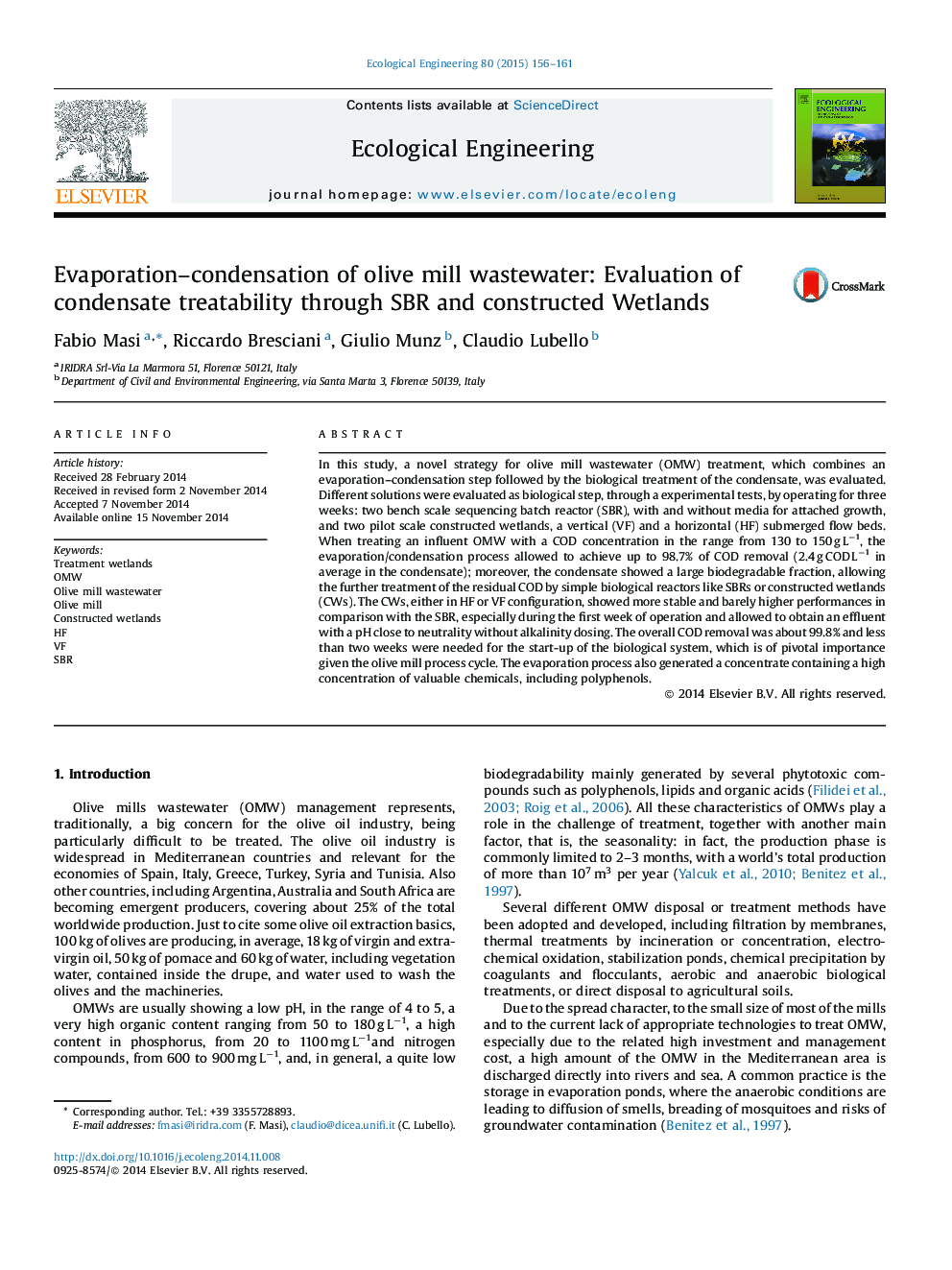| کد مقاله | کد نشریه | سال انتشار | مقاله انگلیسی | نسخه تمام متن |
|---|---|---|---|---|
| 4389041 | 1618019 | 2015 | 6 صفحه PDF | دانلود رایگان |

In this study, a novel strategy for olive mill wastewater (OMW) treatment, which combines an evaporation–condensation step followed by the biological treatment of the condensate, was evaluated. Different solutions were evaluated as biological step, through a experimental tests, by operating for three weeks: two bench scale sequencing batch reactor (SBR), with and without media for attached growth, and two pilot scale constructed wetlands, a vertical (VF) and a horizontal (HF) submerged flow beds. When treating an influent OMW with a COD concentration in the range from 130 to 150 g L−1, the evaporation/condensation process allowed to achieve up to 98.7% of COD removal (2.4 g COD L−1 in average in the condensate); moreover, the condensate showed a large biodegradable fraction, allowing the further treatment of the residual COD by simple biological reactors like SBRs or constructed wetlands (CWs). The CWs, either in HF or VF configuration, showed more stable and barely higher performances in comparison with the SBR, especially during the first week of operation and allowed to obtain an effluent with a pH close to neutrality without alkalinity dosing. The overall COD removal was about 99.8% and less than two weeks were needed for the start-up of the biological system, which is of pivotal importance given the olive mill process cycle. The evaporation process also generated a concentrate containing a high concentration of valuable chemicals, including polyphenols.
Journal: Ecological Engineering - Volume 80, July 2015, Pages 156–161